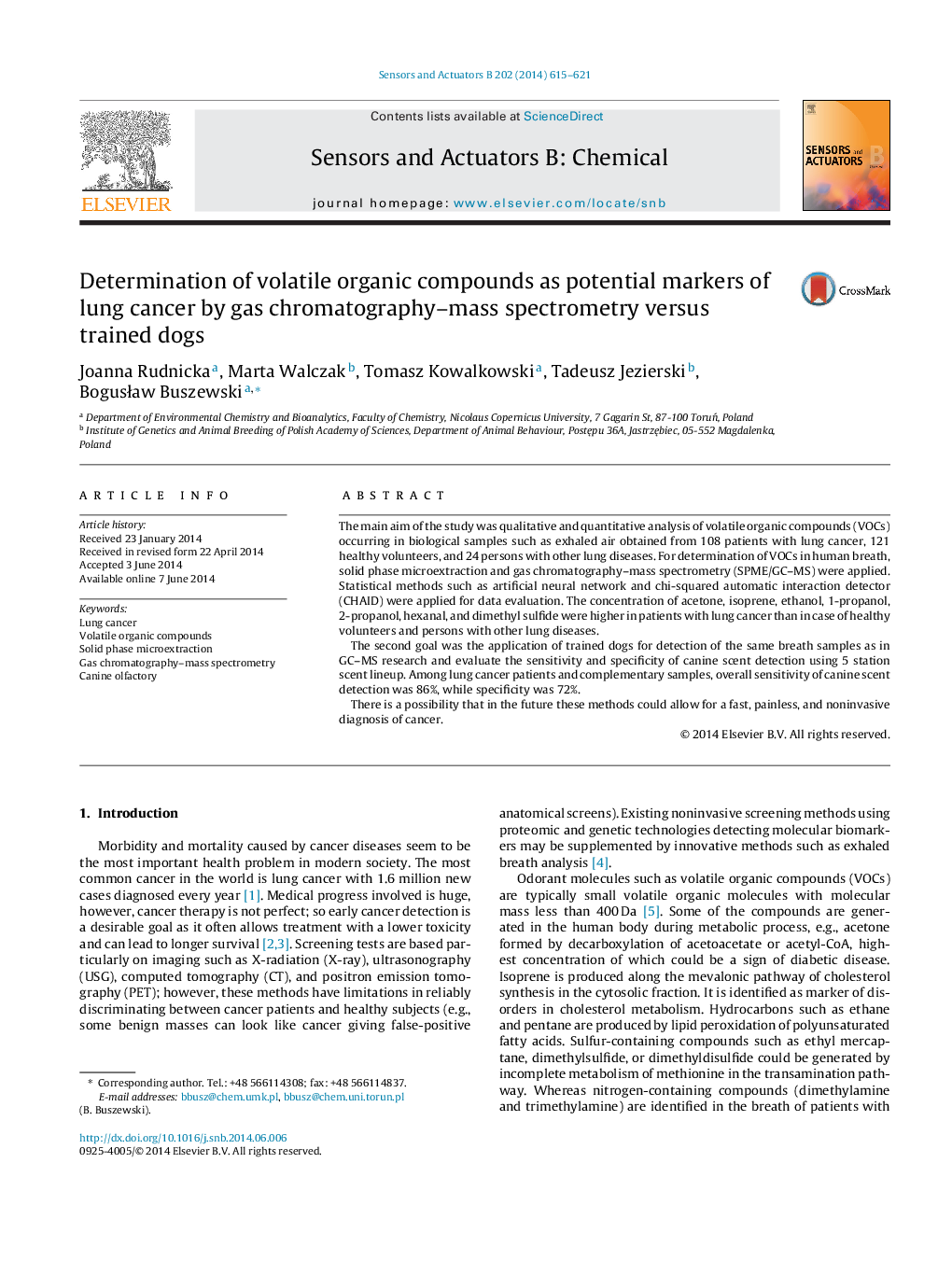| Article ID | Journal | Published Year | Pages | File Type |
|---|---|---|---|---|
| 742718 | Sensors and Actuators B: Chemical | 2014 | 7 Pages |
•Application of GC–MS technique to determine volatile organic compounds in breath sample.•Application of trained sniffing dogs to detect samples with lung cancer.•Data analysis of experiment with dogs and SMPE-GC–MS.
The main aim of the study was qualitative and quantitative analysis of volatile organic compounds (VOCs) occurring in biological samples such as exhaled air obtained from 108 patients with lung cancer, 121 healthy volunteers, and 24 persons with other lung diseases. For determination of VOCs in human breath, solid phase microextraction and gas chromatography–mass spectrometry (SPME/GC–MS) were applied. Statistical methods such as artificial neural network and chi-squared automatic interaction detector (CHAID) were applied for data evaluation. The concentration of acetone, isoprene, ethanol, 1-propanol, 2-propanol, hexanal, and dimethyl sulfide were higher in patients with lung cancer than in case of healthy volunteers and persons with other lung diseases.The second goal was the application of trained dogs for detection of the same breath samples as in GC–MS research and evaluate the sensitivity and specificity of canine scent detection using 5 station scent lineup. Among lung cancer patients and complementary samples, overall sensitivity of canine scent detection was 86%, while specificity was 72%.There is a possibility that in the future these methods could allow for a fast, painless, and noninvasive diagnosis of cancer.
